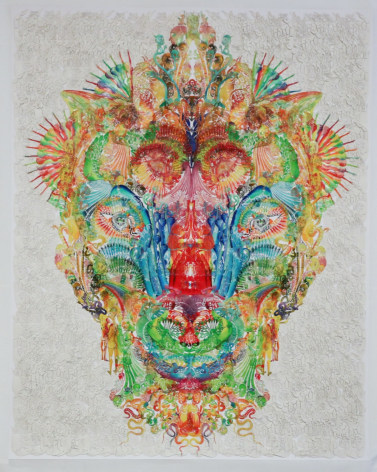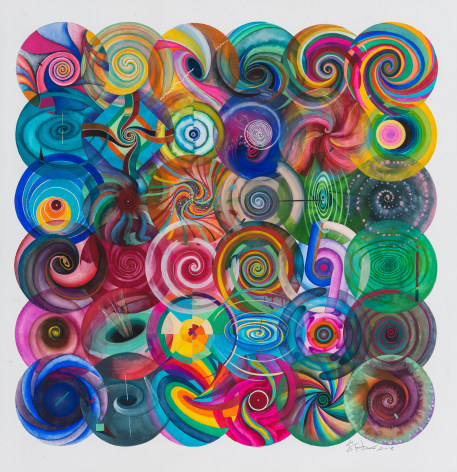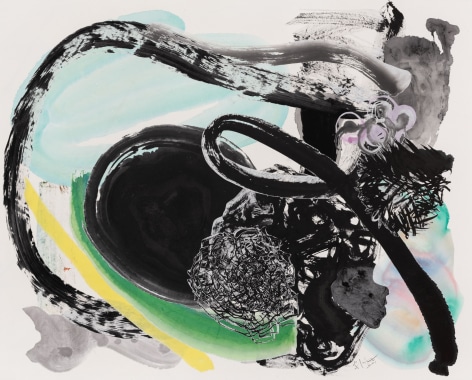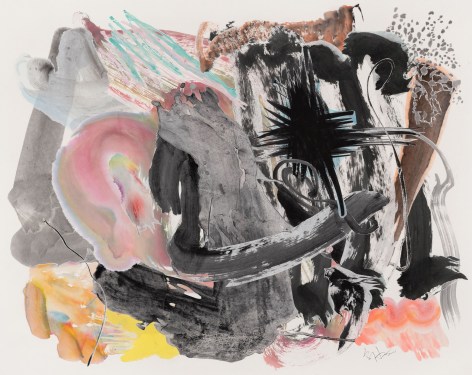Wu Jian’an: Recent Works
Open House: Thursday, September 8, 2022, 3 - 6pm
Address: 55 E 11th Street, 5th Floor, New York, NY 10003
Book an appointment
Chambers is delighted to present the latest examples of Wu Jian’an’s ongoing series 500 Brushstrokes, on which work commenced in 2016. The abstract formal language characteristic of these works came as a considerable surprise to Wu’s admirers as until then there had been a strong element of figuration in all his major series of paper cuts from 2003 onwards with the series known as Daydreams. Alongside the works from this series, we will also feature a paper-cut piece entitled Shapeshifting Diety, created using Wu Jian'an's signature waxed paper-cut figures that are hand-dyed and then stitched onto a silk background.
Born in Beijing in 1980, Wu Jian’an graduated from the Central Academy of Fine Art (CAFA) Beijing in 2005 and currently lives and works there. While studying at the Academy under Lu Shengzhong whose early studies of Chinese folk-art led to a life-long involvement with the traditional craft of paper cut, Wu conceived of ways in which this technique might be used in ways that would have been unimaginable to its original practitioners. His technique evolved from the silhouetting of complicated paper cut-outs against monochromatic sheets of paper to the use of multiple layers of paper of different colors resulting in low-relief effects. Throughout this period his paper cutting skills gained in complexity as his enthusiasm for Chinese mythological themes and esoteric imagery from all over the world became all-consuming, culminating in the process used in the Shapeshifting Diety.
There does not seem to have been a transition period between the wild paper cuts for which he was best known at the time and the equally wild but abstract compositions characteristic of 500 Brushstrokes. Certainly while at the Academy he seems to have stayed away from the study of Chinese painting with its close relationship to the most important of all Chinese accomplishments, the art of calligraphy. On first inspection the works from this series seem to be calligraphic in inspiration and, with their frequently jazzy colors, to be laid down directly on the surface of the support. Wrong on both counts as the relationship to traditional calligraphy is distant to say the least and close inspection - very close inspection, even! - reveals, although with some hesitation at first, that the calligraphic components are not applied directly to the surface but applied to it in the manner of collage.
Wu Jian’an gave a simple explanation early on in the development of the series. “Visitors of all kinds are invited to the studio to play a brushstroke ‘game’. They can freely pick the size and type of the brush, as well as choose the the density of ink and colors in order to write a single brushstroke on a sheet of Xuan paper in whatever style they choose, without creating a recognizable image or character… In traditional Chinese painting, brushstroke are highly regulated. As in a hierarchical society, only a limited number of accepted brushstrokes can be used. 500 Brushstrokes offers equal opportunity to all manner of brushstrokes, orthodox or not, all can go into an artwork. This creates a variety of previously unimaginable relations. Combinations consisting of ‘bad’ strokes often compose incredible images.”
Consequently Wu’s combinations of individual brushstrokes are as far as could possibly be both from traditional Chinese calligraphy which evidences the continuous movements of the calligrapher’s hand and from Western artists such as Jackson Pollock, Mark Tobey or Brice Marden who have responded to Asian calligraphy in highly individual ways.
The skill with which the individual strokes have been collaged to the surface on which they coexist also adds another dimension to the viewing experience. In a description of 500 Brushstrokes #10, 2016, that has recently entered the collection of the Metropolitan Museum of Art, New York, reference is made to the way in which the individual strokes are “collaged into the larger whole using traditional Chinese conservation techniques which allow for nearly seamless layering of paper on paper.” On multiple levels, then, these festive works are not what they seem - not calligraphic, not expressive of a meaning, not painted directly on a flat surface but rather organized by a masterly hand in a manner that fools the eye and delights the mind.
Oddly enough, there is a parallel between the circumstances in which Wu’s first series of paper cuts -Daydreams - were conceived and executed and the recent history of the latest examples of 500 Brushstrokes on display. Wu began working on the earlier series in 2003 when, confined to his room in Beijing because of the SARS epidemic, he picked up paper and scissors and found the practice therapeutic. The figures he created comforted him. Nearly twenty years later, he wrote that “These 500 Brushstrokes were completed in 2021. They spent over a year in transit at sea before landing in New York. Today, when I see them again in 2022, I have a sense of familiarity and strangeness. There is some sweetness hidden underneath, and feelings of hope and optimism. I feel that the time I created them was not long ago at a time when a force of gathering and wishing to generate something consequential was moving between the strokes, eager and calling out.”
For more information please contact us at cfa@chambersfineart.com






